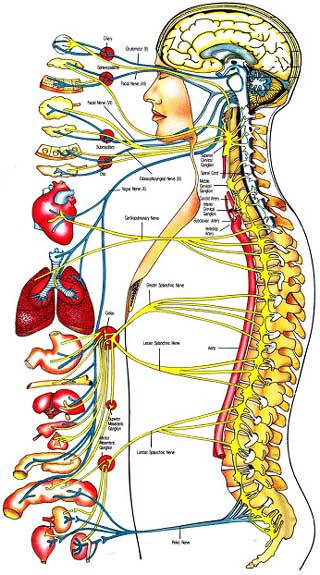 Dr Henry Windsor, a medical doctor, was incredibly interested by patients who effortlessly became healthy from disease when under chiropractic or osteopathic spinal care (the traditional form of osteopathy).
Dr Henry Windsor, a medical doctor, was incredibly interested by patients who effortlessly became healthy from disease when under chiropractic or osteopathic spinal care (the traditional form of osteopathy).
“How do chiropractors and osteopaths get people better without drugs or surgery?” he asked.
Using the principles of chiropractic he developed a unique study, on animals and humans that will help him find a relationship between the health of the spine and any diseased organ.
In 3 separate medical studies, Dr Windsor dissected 75 human cadavers and 22 cat cadavers. Of these 97 subjects he found 221 diseased organs.
His objective was to find the diseased organs and see if the spinal nerves which control those organs were affected. This is what Dr Windsor wrote:
“(Of the 221 diseased organs) 212 were observed to belong to the same sympathetic (nerve) segments as the vertebrae in curvature… These figures cannot be expected to exactly coincide…for an organ may receive sympathetic filaments (nerve endings) from several spinal segments.”
So, Dr Windsor found a 95.9% correlation between a minor misalignment in the spine and the diseased organ. These are some examples he found:
Misalignments in the upper thoracic spine (T1-5):
Heart Disease: 100% correlation between the diseased heart and the nerves which control the heart. All 20 cases of heart and pericardium conditions had the upper five thoracic vertebrae misaligned.
Lung Disease: 100% correlation between the diseased lung and the nerves which control the lung. All 26 cases of lung disease had spinal misalignments of the upper thoracic spine.
Misalignments in the mid-thoracic spine (T5-9):
Stomach Disease: 100% correlation between the diseased stomach and the nerves which control the stomach. All 9 cases of stomach disease had misalignments in the mid-thoracic spine.
Liver Disease: 100% correlation between the diseased liver and the nerves which control the liver. All 13 cases of liver disease had misalignments in the mid-thoracic spine.
Gallstones: 100% correlation between the diseased gallbladder and the nerves which control the gallbladder. All 5 cases of gallstone disease had misalignments in the mid-thoracic spine.
Pancreas: 100% correlation between the diseased pancreas and the nerves which control the pancreas. All 3 cases of pancreas disease had misalignments in the mid-thoracic spine.
Spleen: 100% correlation between the diseased spleen and the nerves which control the spleen. All 11 cases of spleen disease had misalignments in the mid-thoracic spine.
Misalignments in Upper Lumbar spine (L1-3)
Prostate and Bladder disease: 100% correlation between the diseased organ and the nerves which control that organ. All 8 cases of prostate and bladder disease had misalignments in the upper-lumber spine.
Uterus: 100% correlation between the diseased uterus and the nerves which control the uterus. Both of the 2 cases of uterine conditions had L2 misaligned.
The brain controls every organ via nerves which leave the spine at various levels. When Dr Windsor has shown us, and what DD and BJ Palmer have discovered, is that a misalignment of a vertebra (or a vertebral subluxation) is a major reason for organs malfunctioning.
Unfortunately, we cannot feel how healthy our organs are. We do not know how much nerve energy is arriving to the organs and if it is reduced.
However, chiropractors and traditional osteopaths have been getting people well from many ailments for well over a century using only this principle and techniques to correct the vertebral misalignments (or vertebral subluxation).

